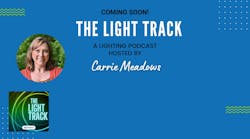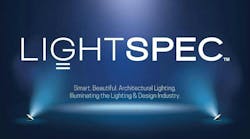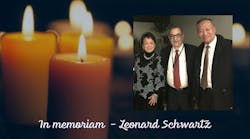As with all solid-state lighting (SSL) markets, the horticultural lighting sector continues to evolve as new research culminates in scientific findings. We expect the presentations at the Oct. 31 HortiCann Light + Tech Conference to reflect the ongoing advances in applied science, product development, and business systems that will enable conventional horticulture operations as well as controlled environment agriculture (CEA) to expand and meet the demands of both global populations and resource management.
One of the earliest aims that we reported in the field of LED-based horticultural lighting was, of course, ensuring the efficiency of fixtures. It’s long been established that LED lighting consumes less power, and along the road of advancing SSL for general illumination we have witnessed lm/W improving to deliver more cost-effective luminaires, while quality of light has become a new objective. But in horticulture, efficiency must move beyond metrics that have traditionally been used to characterize lighting. The American Society of Agricultural and Biological Engineering (ASABE) has taken on the task of defining appropriate metrics, developing test methods, and documenting recommendations on how to implement this guidance to produce SSL components and systems that will meet performance requirements for grower operations.
In parallel with the ASABE standards development, the SSL industry has taken up the challenge of innovation and thinking about how plants utilize light differently than the human visual system, and how to adapt that knowledge into the product design process. The amount of usable light that a fixture produces for plants depends largely on the spectral energy that can be used by the crops. One important unit for consideration is photosynthetically active radiation (PAR), generally defined as the 400‒700-nm spectral band where the photons drive photosynthesis. However, as Fluence Bioengineering scientist Josh Gerovac wrote in 2017, “[P]hoton efficacy, which refers to how efficient a horticultural lighting system is at converting electrical energy into photons of PAR,” is another metric that factors into the efficiency of a fixture for horticultural lighting.
It is new data on lighting efficiency in relation to photon efficacy that Happy Leaf chief technology officer (CTO) Vic Zaderej will explain at the HortiCann conference. Zaderej, the company’s lead designer and lighting engineer, has focused on commercializing high-tech LED grow lights since 2016 when he founded Happy Leaf. Zaderej’s efforts center on delivering maximum efficiency, and with that end in mind, he participated in a research project with Dr. Krishna Nemali of Purdue University on energy use efficiency (EUE) studies. In their work, the researchers found evidence that photon efficacy in µmol/J from the light source may not be the optimal measure of lighting efficiency. This could be an opportunity for lively debate and discussion amongst industry participants who will surely be interested in advancing their knowledge of test and measurement, and considering how light recipes can impact the efficiency of horticultural SSL and their product development strategies.
Register to join us in Denver, CO on Oct. 31 to hear Zaderej share the conclusions from the studies, as well as the full slate of business, technology, and lighting application presentations.
Get to know our expert
VICTOR ZADEREJ is a prolific inventor named on 60+ patents, many in the area of SSL. His deep understanding of LED technology and circuitry is the basis of Happy Leaf LED, a horticultural lighting company. A frequent speaker and educator, Zaderej’s presentation on “Empowerment Through Light,” a TEDx talk, can be seen on YouTube. Zaderej holds two degrees from M.I.T., and an MBA.







